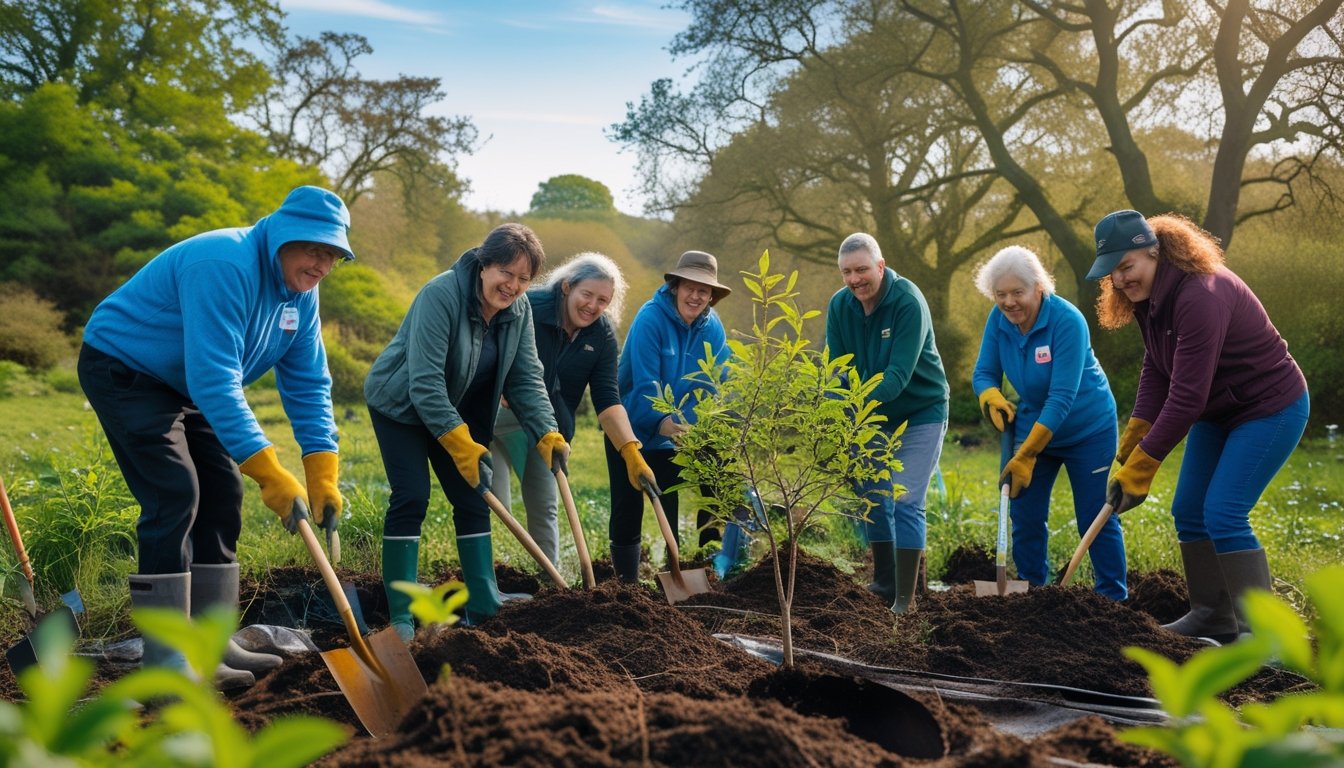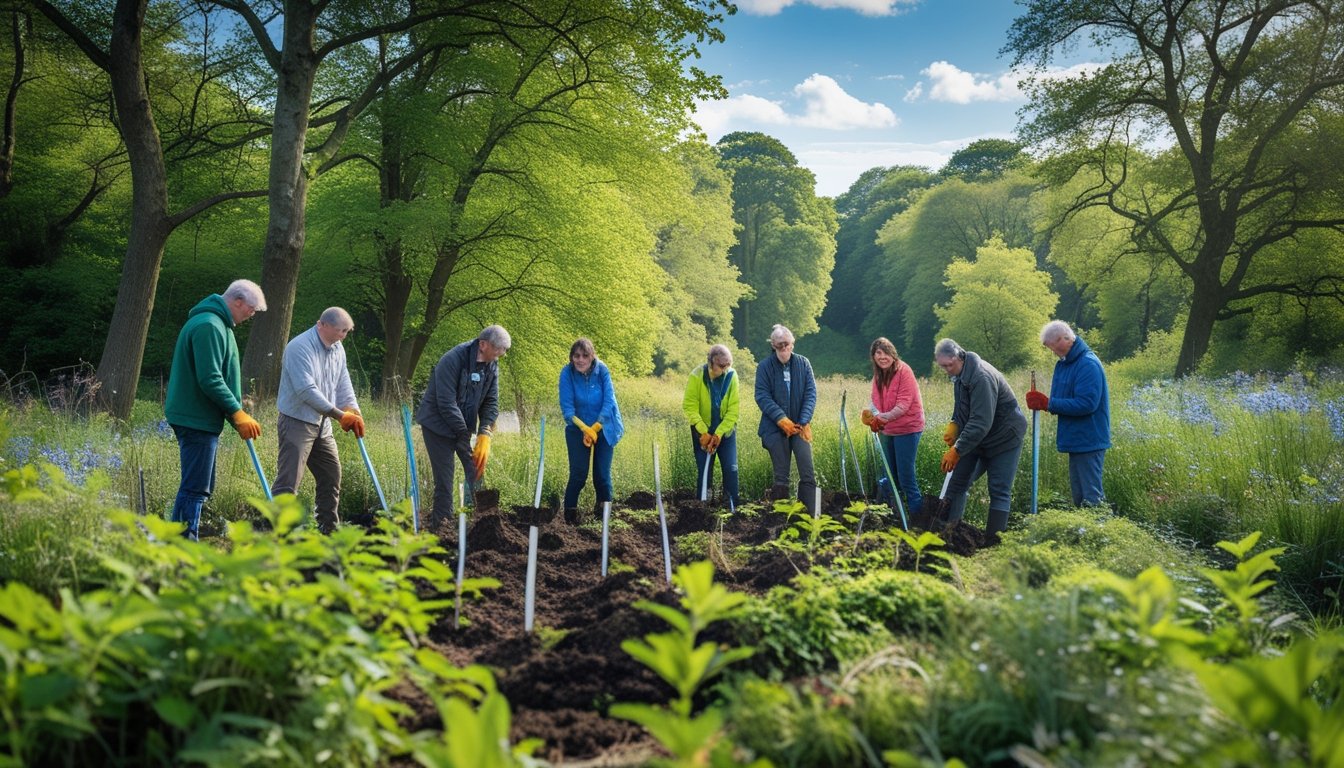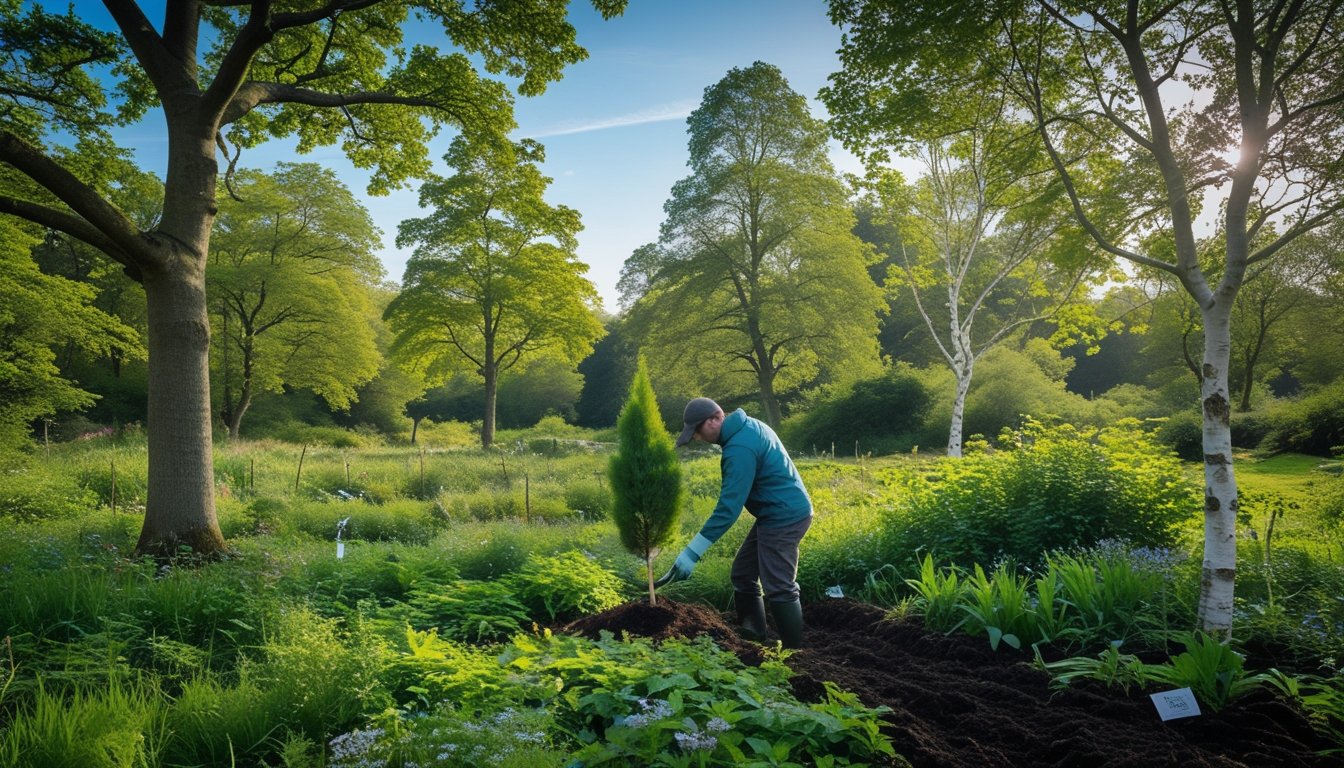Late updated: 14 Jul 2025 18:07
Written by: Emily Thornton
Planting Native UK Trees For Biodiversity Boost: Enhancing Ecosystems Through Local Flora
Planting native trees in the UK is a powerful strategy to enhance biodiversity and create sustainable environments. With the rise in environmental concerns, the importance of native trees has grown significantly. They play a crucial role in supporting local wildlife, offering food and shelter to a range of species, and contributing to a balanced ecosystem. The most significant benefit of planting native UK trees is their ability to boost biodiversity without disrupting the natural landscape.

Our nation's native trees provide not only ecological benefits but also aesthetic and practical ones. The beauty that native trees bring to our gardens and landscapes is undeniable, with their seasonal changes marking the year's cycles with colour and life. Moreover, these trees improve air quality and support soil health, making them excellent allies in our fight against climate change.
Looking at best practices, it's essential to choose the right species for each area. This ensures that the planted trees thrive while fostering biodiversity. By carefully selecting and planting native trees, we can effectively contribute to environmental restoration efforts and create thriving habitats for a wide variety of wildlife.
Key Takeaways
- Planting native trees boosts biodiversity naturally.
- Native trees support wildlife and enhance ecosystems.
- Selecting the right tree ensures success in restoration efforts.
Essential Benefits of Planting Native UK Trees for Biodiversity
Planting native UK trees significantly enhances biodiversity and provides a wealth of ecological advantages. These trees foster native wildlife habitats, boost pollination, and improve soil health and water regulation, making them crucial in creating sustainable ecosystems.
Supporting Native Wildlife and Habitats
Native UK trees, integral to our landscapes, play a vital role in creating habitats for local wildlife. These trees have evolved alongside our native species, providing essential resources such as food and shelter. Birds, mammals, and insects rely on native trees for survival.
Habitat Connectivity: These trees form corridors that connect fragmented landscapes, allowing wildlife to move safely and maintain genetic diversity. Habitats such as woodlands teem with life, offering a rich tapestry of biodiversity.
Species Support: Many native trees support specific species of insects and fungi, which in turn support higher trophic levels. As a result, planting native trees is beneficial not only for individual species but also for the broader ecological networks.
Boosting Pollinators and Pollination
The presence of native trees significantly enhances the population and efficacy of pollinators like bees and butterflies. These trees provide nectar, pollen, and breeding sites that are vital to pollinator health.
Nectar Sources: Native trees bloom at various times, ensuring a consistent food source across seasons. This variety supports pollinator populations and offers resilience against climate variations.
Enhanced Pollination: By supporting healthier pollinator populations, native trees also boost pollination of other plants. This creates a more dynamic and robust ecosystem, aiding in the reproduction of native flora.
Pollination Dependence: Many UK plants rely on native pollinators. By planting native trees, we ensure the survival and flourishing of these essential insects, which are vital for biodiversity.
Enhancing Soil Health and Water Regulation
Native trees contribute to soil stability and enhance its quality by promoting a healthy underground ecosystem. Root Systems: The root systems of native trees improve soil structure, preventing erosion and fostering beneficial microbial activity.
Nutrient Cycling: Litter from leaves and fallen branches decomposes, enriching the soil with organic matter. This process is fundamental to maintaining fertile and productive ground.
Water Regulation: Native trees play a critical role in managing water cycles. They reduce surface runoff, enhance water infiltration, and maintain groundwater levels, leading to better water conservation and reducing the risk of flooding.
The cumulative effect of improved soil and water conditions is a healthier environment, supporting diverse life forms and enhancing ecosystem resilience.
Strategies and Best Practices for Maximising Biodiversity

We can significantly enhance biodiversity by focusing on thoughtful selection of native trees, establishing wildlife corridors, and aligning with climate change goals. Each of these strategies plays an essential role in supporting local ecosystems.
Selecting the Right Native Trees
Choosing the appropriate native trees is vital for bolstering biodiversity. Native plants, adapted to local soil and climate conditions, support native wildlife by providing food and shelter.
We should consider factors such as soil type, rainfall patterns, and tree resilience to local pests. Planting diverse species can help create a stable ecosystem. Species like oak, birch, and hawthorn are known for their ability to sustain wildlife.
Maintaining diversity ensures long-term ecosystem health. This involves recognising each species' role in the ecosystem and replacing non-native trees with native ones where possible.
Creating Wildlife Corridors and Hedgerows
Wildlife corridors and hedgerows act as crucial pathways for species movement, ensuring access to diverse habitats. By connecting fragmented landscapes, these features enable species to migrate, find mates, and access essential resources.
To maximise their effectiveness, corridors should be wide enough to facilitate movement and include a rich variety of native plants. This diversity helps cater to different species' needs, from birds to insects.
Planting hedgerows with native species like blackthorn and elder provides food and nesting sites. Regular maintenance, such as avoiding excessive trimming, helps these natural boundaries thrive.
Integrating Native Trees into Parks and Planting Schemes
Integrating native trees into parks and public planting schemes enriches urban biodiversity. Incorporating trees like beech and rowan can transform these spaces into wildlife havens. Parks offer valuable green spaces in cities, and by planting a variety of native trees, we can create mini ecosystems that support local wildlife.
In addition, involving the community in planting initiatives fosters a connection with nature. This engagement encourages appreciation and care for these important habitats as well.
Aligning with Climate Change and Sustainability Goals
Incorporating native trees aligns with broader climate change and sustainability objectives. Native trees are more resilient to local climate fluctuations, reducing water and energy requirements.
Planting schemes can focus on trees that reduce carbon footprints and don't require extensive maintenance. Linking tree planting efforts with sustainability goals ensures a harmonious relationship between development and environmental conservation.
By aiming to restore native flora, we support carbon sequestration and create ecosystems that withstand climatic shifts. Investing in native tree planting aids in building a sustainable future and mitigating the impacts of climate change.
Frequently Asked Questions

By planting native UK trees, we support local biodiversity and enhance ecological resilience. These trees provide essential food and habitat for various wildlife, making them valuable in preserving our environment.
What are the best UK native trees to plant for attracting birds and supporting local wildlife?
Our choices include the Oak, Silver Birch, and Rowan. Oaks are crucial as they support numerous insects and birds. Silver Birch offers seeds and nesting sites, while the Rowan provides berries for many bird species. These trees play an integral role in their ecosystems and attract a variety of wildlife.
How do trees contribute to local biodiversity and what species are particularly beneficial?
Trees offer shelter, food, and breeding grounds for wildlife. The Hawthorn and Blackthorn are particularly beneficial, as they provide dense foliage and flowers for insects. Their berries are also a food source for birds. The diverse structure and offerings of trees bolster local ecosystems immensely.
Which types of native trees are suitable for small gardens and still promote bird-friendly environments?
Rowan, Crab Apple, and Wild Cherry are all excellent for smaller gardens. These trees do not grow too large, yet they produce flowers and fruits that attract birds. Their colourful displays through seasons make them attractive choices for enhancing any compact space with biodiversity.
What actions can individuals take to enhance biodiversity through tree planting?
We can start by choosing native species suited to our local environment. Participating in or initiating community tree-planting projects also helps. Paying attention to tree spacing and maintenance ensures healthy growth and maximised benefits for local biodiversity.
How do trees impact social wellbeing and community spaces?
Trees improve air quality, reduce noise, and provide shade, helping create a pleasant environment. Green spaces with trees are linked to reduced stress and enhanced wellbeing. They also offer gathering spots for communities, fostering social interaction and improving quality of life in urban areas.
What are the ecological benefits of planting trees like the Rowan in the UK?
Rowan trees support a variety of birds with their bountiful berries, fostering a diverse local bird population. They are not only visually attractive but also contribute to soil health. By supporting pollinators and other wildlife, Rowans play a significant role in strengthening local ecosystems.
